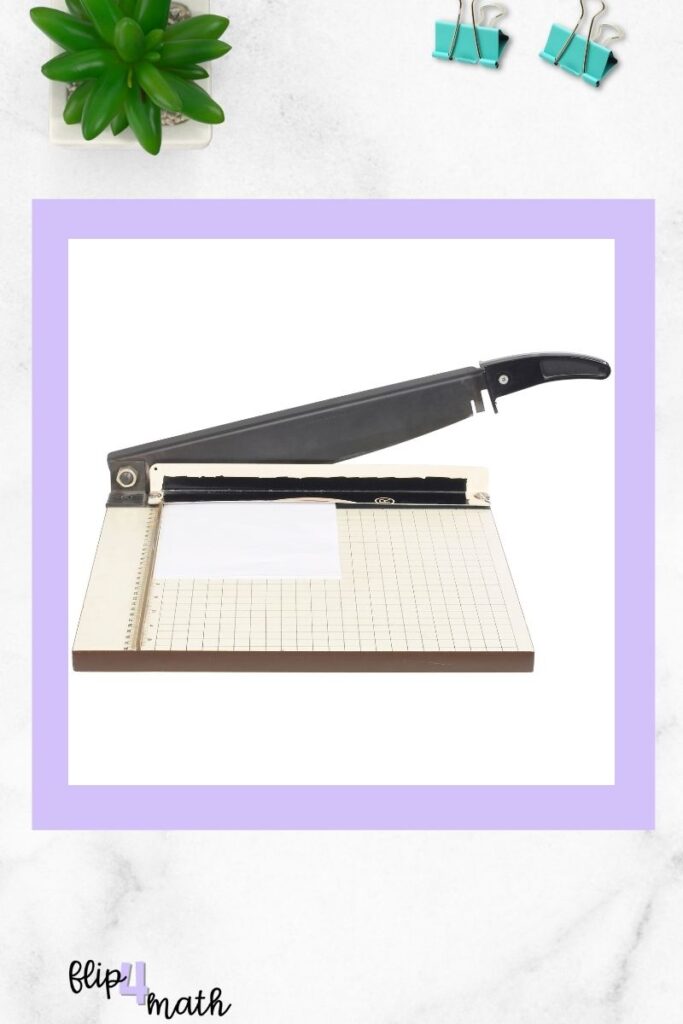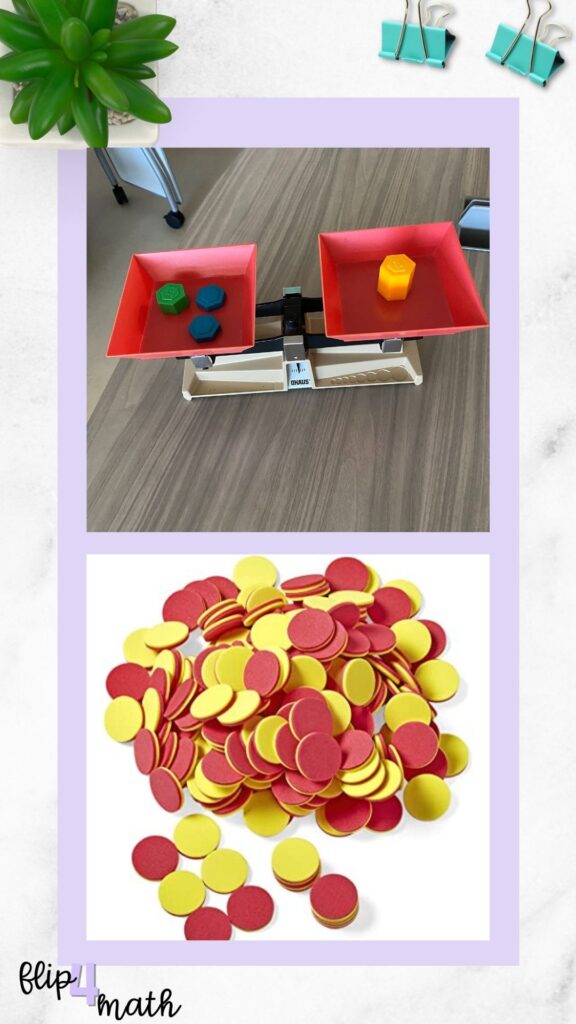As I was packing up my classroom this year and reflecting on this crazy year, I took pictures of my favorite (and most useful) supplies to use in my sixth grade math classroom. I grouped them into three main categories: general supplies, classroom management and math tools/games. None of these items make or break my teaching but they do help to make everything run smoother! [**I am not trying to sell any of these items but if you are looking for where I got them from, I have linked my Amazon store to most pictures and the items are on my list there.] So here is a quick rundown of my 20 must-have supplies for my 6th grade math classroom.
General Supplies
Pencils, pencils and more pencils – As a math teacher who has their students only write in pencil, this is probably the biggest supply need in my classroom. Every year, I request lots of pencils from my school as well as shop the back-to-school deals to grab a whole stack of pencils. I have even gotten golf pencils before. Those aren’t the best though because they do not have an eraser.
As a side note, I recommend a pencil borrowing system. I had approximately 6 pencils clipped to my white board and students would sign them out when they borrowed them. At the end of the period, the students clip their pencils back up and erase their name. Its a quick way to easily see whether all pencils are returned at the end of the period or who still has it out.
Great pencil sharpener – These Bosch pencil sharpeners are seriously the best. They are expensive but will definitely last. I’ve had mine for several years!
Paper Slicer – Best tool when I need to quickly cut paper for my whole class. I’m extremely careful to put this away by my desk. I also do not let the students use this ever. I use the paper slicer everyday to cut off any excess paper on any of my foldables or just cut paper in half for my students to use.
Classroom Management
Doorbell – Getting my students attention with the click of a button sold me! I wear the remote on my lanyard and train my students to freeze when they hear the noise.
Bathroom Passes – In the beginning I just had pieces of wood that I painted for bathroom passes. Now I use lanyards that hang by the door for the students to take on their way out. It makes it easy to keep track of how many students I have out of the room. Plus it is easy for the hall monitor to see where my students are coming from. I got these from Etsy.
Colored Plastic Folders – This is how I organize all of the papers that need to be collected, graded and returned. The plastic folders are the only ones that last the whole school year. I use this folder system because I can easily identify each class and they fit in my bookbag when I need to carry them home.
Prize Box – Sixth graders still love a prize box – or at least mine do. I put inexpensive items in my prize box that can be found at the dollar store or on Amazon. My prize box has pencils, pens, vinyl stickers, fidget toys and other small items. On Friday’s we celebrate by picking out of the prize box. To learn more about how I implement the prize box in my classroom, read here.
Clipboards – Movement in my classroom is important. Whether it is for scavenger hunts, group work or math workshop, I have them use clipboards so that they have a hard surface to write on. They can still show their math thinking.
Amazon Echo Dot – “Alexa” – At first this was a splurge purchase (on Prime day) but it quickly became something I needed. I use it to play music, set a timer to keep me on track and just “ask Alexa” questions that come up in class. Every morning, I look forward to playing my music while setting up for the day. On Fridays we play our “It’s Friday” song as the school day is wrapping up. Alexa has become a part of our class!
Teaching Math/Games
Dice – My biggest recommendation on dice is to get the foam ones unless noise is not a problem for you. The foam ones are light and silent. The double dice are cool because they only need one to get two rolls but they do add to the noise of the classroom. In the end, it doesn’t matter what kind of dice that you get but they will be used when you play games or do activities with your students.
Deck of Cards – These are cheap to grab at dollar stores. I try to have several decks on hand for the students to use to play games at indoor recess. Cards can also be used when introducing integers. I tell them that the red cards are negative numbers and the black are positive numbers. I’ve had them line up in order or graph themselves on a number line. They also can find their opposites. A deck of cards provides lots of opportunities for activities in the sixth-grade math classroom.
Jenga – Besides playing regular Jenga, I’ve created some Jenga math games for them to use to practice their math skills. These games have kept them engaged and practicing the entire period.
Clearboards – These clear plastic sleeves are my go-to for easy whiteboards for my students. I place a piece of paper that has a coordinate graph, a table and a number line inside the sleeve. With dry erase markers, the students can easily show their math thinking on either the blank side or use the math graphs, if needed.
Plickers – This free online platform allows me to present multiple choice questions to students. They hold up their designated QR with their answer in the air and with a quick scan of my phone, I know what they think is the answer. All I do is print the QR codes from the plicker website, and I’m all set to go.
3-D Geometric Shapes with Nets – Three dimensional shapes and their nets can be hard for students to see how they unfold. There are some cool digital demonstrations of a 3-D shape unfolding to a net on Geogebra but I think having the concrete object also helps tremendously. Seeing the shape in 3-D versus a 2-d drawing makes a big difference in the students’ understanding.
Balance – When teaching how to solve equations, I use the balance to demonstrate that the = shows that the expressions on each side of the = are equal. If you do something to one side, you must do it to the other side to keep the equation balanced. It is a good visual to explain those properties of equality.
Integer Chips – Hands down, integer chips are the best way to teach integer operations. I really like how they help students see how zero pairs work. These concrete chips help make a difficult topic much easier to grasp. Like dice, these also come in the foam option. If you want to see how I use them in the classroom, check out the highlights on my IG.
Wall Number Line – Whether you choose to do a vertical or horizontal line number line, this is a great visual for students as they learn about integers. It also helps with absolute value as well as comparing integers. Number lines are a great hands on visual to help the students make connections with many math topics.
Rulers – These are always useful when drawing number lines or coordinate planes. Plus I have students look at them to better understand the relationship between metric and customary units. When I put out rulers for students though, I have to remind them that they are not swords, helicopters or catapults (haha!)
Four Function Calculators – There are topics that I want all students to understand regardless of their computation skills. One of these topics is the mean absolute deviation. This topic is tedious and one little error can mess you up. When my students use these calculators though, I have them write down what they typed to show their work.
I would love to hear back from you if you use other items that I am missing! Send me a message at flip4mathteacher@gmail.com to let me know.
















